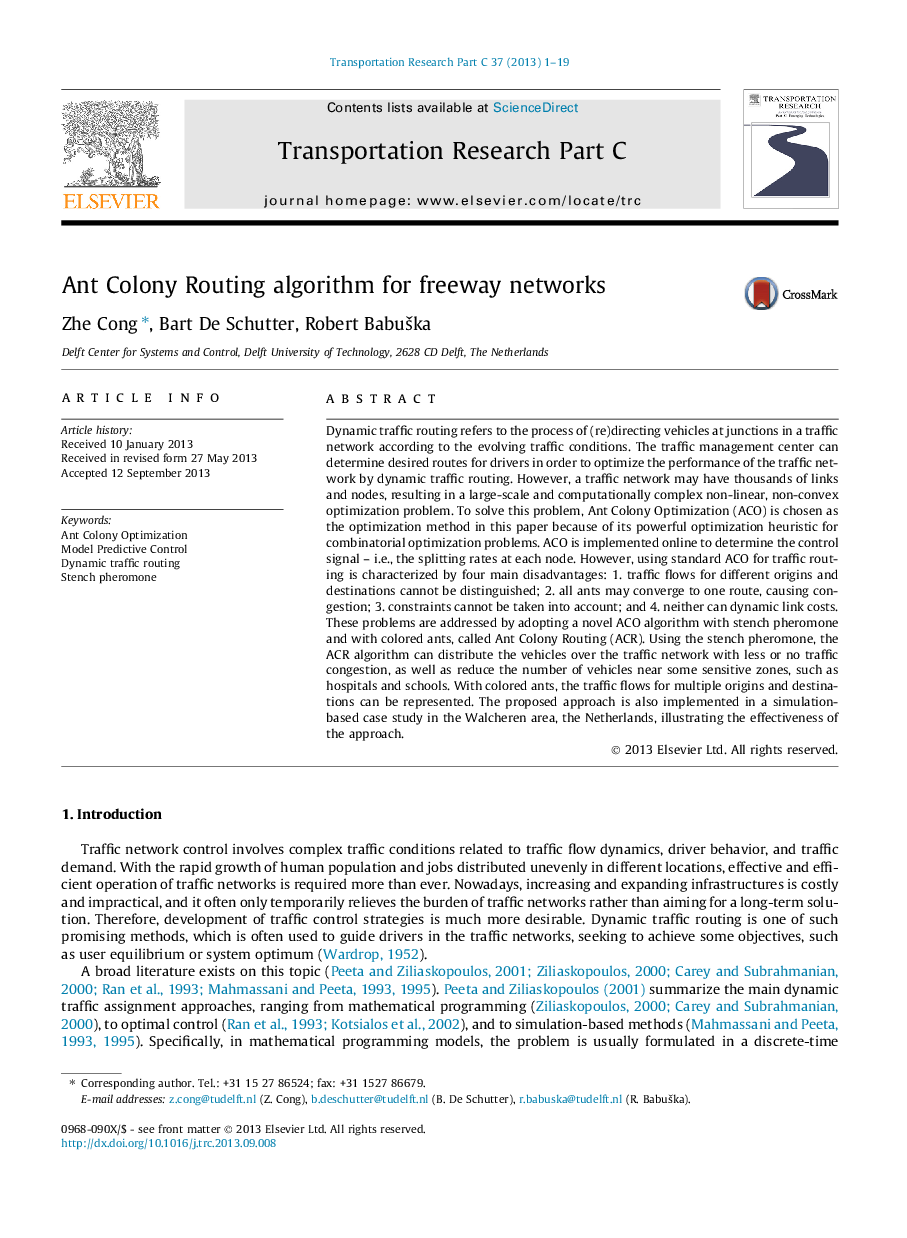| Article ID | Journal | Published Year | Pages | File Type |
|---|---|---|---|---|
| 525332 | Transportation Research Part C: Emerging Technologies | 2013 | 19 Pages |
•A novel ant-based routing algorithm is developed to solve dynamic traffic routing problems in freeway networks.•A two-step control strategy, including a network pruning step and the Model Predictive Control approach, is introduced.•A simulation study, based on an existing highway network in the Netherlands, is used to illustrate the algorithm.
Dynamic traffic routing refers to the process of (re)directing vehicles at junctions in a traffic network according to the evolving traffic conditions. The traffic management center can determine desired routes for drivers in order to optimize the performance of the traffic network by dynamic traffic routing. However, a traffic network may have thousands of links and nodes, resulting in a large-scale and computationally complex non-linear, non-convex optimization problem. To solve this problem, Ant Colony Optimization (ACO) is chosen as the optimization method in this paper because of its powerful optimization heuristic for combinatorial optimization problems. ACO is implemented online to determine the control signal – i.e., the splitting rates at each node. However, using standard ACO for traffic routing is characterized by four main disadvantages: 1. traffic flows for different origins and destinations cannot be distinguished; 2. all ants may converge to one route, causing congestion; 3. constraints cannot be taken into account; and 4. neither can dynamic link costs. These problems are addressed by adopting a novel ACO algorithm with stench pheromone and with colored ants, called Ant Colony Routing (ACR). Using the stench pheromone, the ACR algorithm can distribute the vehicles over the traffic network with less or no traffic congestion, as well as reduce the number of vehicles near some sensitive zones, such as hospitals and schools. With colored ants, the traffic flows for multiple origins and destinations can be represented. The proposed approach is also implemented in a simulation-based case study in the Walcheren area, the Netherlands, illustrating the effectiveness of the approach.
